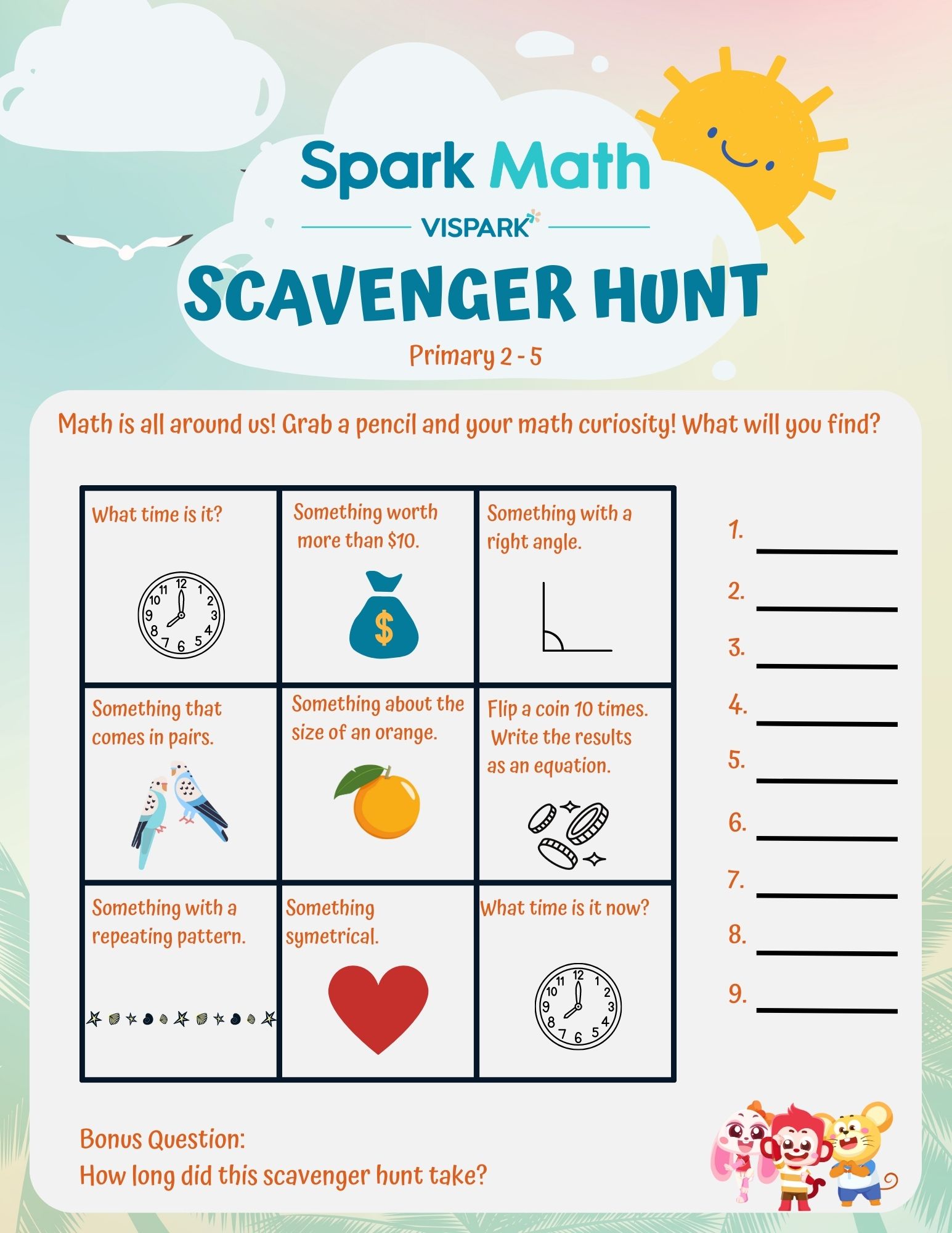
Looking for a fun activity for your children where learning can feel like play? Check out this Spark Math Scavenger Hunt, great for children from Primary 2 to 5. This is an exciting way for families and friends to get together and have some fun with the math around us. Our Spark Math Scavenger Hunt activity can be done almost anywhere, so it’s perfect for both rainy or sunny days. Download our worksheet below!
The Spark Math Scavenger Hunt

What Concepts Does The Spark Math Scavenger Hunt Teach?
Time / Time Management
Telling time gets more precise between primary 2 to 5. Children should be able to get time down to the exact minute. While telling what time of that day is one of the most used math skills, we also work on keeping track of time in this sheet. Take note of the time you start and end the math scavenger hunt, and let your child do the math to see how long it took to complete. Keep a stop watch going to see if your child’s answer matches the stop watch. If doing this project in a group, see who can complete it the fastest.
Money Value
Learning how to interact with money is another math skill people use everyday. From grabbing a snack at school, to budgeting personal finances, understanding money is key to everyday life. Knowing how much things cost and are worth is an ever growing skill. A BYU study shows that by establishing money concepts early, children who start saving young and have hands-on experience with money do better with money management later in life. Take time to let children know what things are worth and how budgets work.
Geometry / Symmetry
For students between primary 2 to 5, geometry is more than just understanding shapes. They have to learn more in detail about what makes up those shapes, like lines, angles, symmetry, and more. Knowing how to use various elements to build different shapes further boosts children’s understanding of how things are built. It may not seem like it, but understanding the concepts of how to build shapes can help children have a strong knowledge of core STEM subjects, like engineering and technology. From architecture to video game design, understanding geometry is key in some of the most popular and exciting careers.
Matching Pairs / Patterns
Observing and understanding the connections between things, even if they are subtle, is a major aspect in being a successful problem solver. Sometimes the similarities between objects is obvious, like a pair of shoes or matching images in a game. At other times, patterns and similarities are harder to find. Use items around the house and try to find similarities between two objects in ways you may not realise, like how much they cost or how big they are. Help your children find patterns around your house you might not notice. From how your family stack dishes to putting away clothes, patterns exist in everyday life in fun, interesting ways. Discover patterns all around and see what comes next.
Percentages, Probabilities and Writing equations
Flipping a coin is a great intro to understanding probability. Each flip has a 50% chance of coming up heads or tails. Take those chances and create an equation with the data you have created to figure out how your flips turned out. Do the percentages change when you flip it higher? Compare those numbers and create equations comparing the different results. This is a great and simple way to experiment and see similarities and differences.
Scavenge, Hunt, and Have Loads of Fun!
Have family fun with this Spark Math Scavenger Hunt! Using math in the real world makes it more accessible for children and shows how math is part of everyday life. Spark Math uses the CPA Method (Concrete, Pictorial Abstract) method when teaching math concepts and scavenger hunts are a great representation of this method.
Want to do more fun activities? Check out our Scavenger Hunt for K1 to P1 children, and our blog article on 4 kinds of engaging math games. Looking for gamified math lessons led by live teachers? Spark Math by VISPARK is the place for you. Schedule a FREE trial class today!




